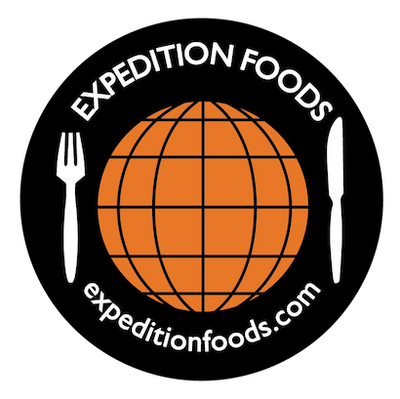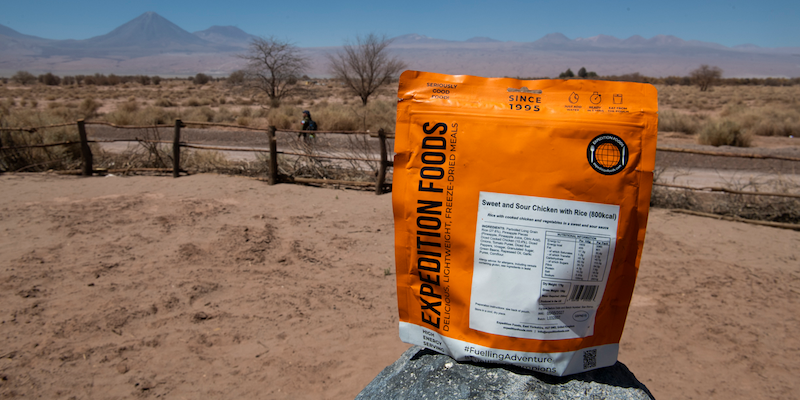-
Meals
-
Ration Packs
-
Special Diets
- Survivor Foods 25-Year Tins
-
Snacks, Drinks & Accessories
- About Us
The 1000-Mile Iditarod Trail Invitational
June 04, 2020
We caught up with Steve Cannon; adventurer, explorer, author, filmmaker, and Expedition Foods enthusiast. Steve was the first Iowan to complete the Iditarod Trail Invitational, the 1000-mile bike race from Anchorage to Nome on the iconic Iditarod Trail.
Expedition Foods (EF): Tell us about the Iditarod Trail Invitational, what does it involve?
Steve Cannon (SC): The ITI is a 350-mile or 1000-mile self-supported race across Alaska in the middle of winter. Athletes can attempt it on foot, ski or Fatbike.
EF: Have you always been a cyclist? Tell us a bit about yourself, how and when did you get started?
SC: No. Adventure racing was my first love, then ultra running, kayaking and endurance cycling.
I was a late bloomer for sure; a troubled youth and early adult years had me in BIG trouble.

EF: When did you decide to compete in the Iditarod Trail Invitational?
SC: The ITI is not a race just anyone with a desire and a bank account can do.
Everyone has to qualify through a handful of 100-mile winter ultras. I’d say by my second or third winter race, the idea of it started really tugging at me.
Eventually I’d go all in, moving to Alaska for an entire winter to train. I lived outside of Fairbanks in a dry cabin (no running water) and started riding and learning the craft from those that had done the race previously and called Alaska home.
EF: When did you start training for the Iditarod Trail? Can you tell us how you trained each week for the Iditarod?
SC: The 1000 Miles to Nome was the culmination of many years training / adventuring. It’s SO much different than, say, running a marathon, where you have this one discipline (running) and to get ready you just do that one thing... a lot.
This race addresses many, many variables and if you suck at any of them the race will find it. Fitness, nutrition, perspiration control (sweat can kill), bike maintenance, sleeping at -30F, when to wait out a storm, and when to push on.
You can be great 90% of the time... or at 90% of these skills and that might not be good enough.

EF: How did you prepare your nutrition for the race? Do you have a list of what you ate each day? What worked for you and what did not work for you?
SC: Nutrition obviously is key. It’s impossible really to reach 6000-8000 calories a day consistently. You burn calories at such a high rate in the cold. I liked my coach’s advice: “If it ain’t nailed down, eat it.” Which was to say, eat everything and often.
I use a combination of dense homemade bread and power bars, happy foods like peanut M&M’s, and the giant peanut butter cups, and for my meals always the Expedition Foods 1000kcal meals. They are perfect for this type of challenge: Lightweight, easy to make (just add water), diverse in choices and high-calorie. I love all the options the menu offers. Even high-cal desserts.

EF: How did you manage to stay hydrated? Did you just drink water or did you add electrolytes to your drink? Did you re-hydrate with anything special at the end of each day?
SC: Hydration is also key and not just for the reasons everyone is aware. Hydration plays a BIG role in staying warm. Dehydration makes you colder and can lead to a much quicker onset of hypothermia in extreme cases. It also plays a big role in performance. Output drops dramatically if we don’t keep the fluids topped off.
A great friend, Wes Wagner, introduced me to a company he represents called Arbonne. I have had great results with their during-and-after workout powders. I didn’t drink anything ever that didn’t have some sort of caloric / performance benefit to it.
At the end of the day or night I would mix up a double / sometimes triple dose of post-workout and protein powders to drink with my Expedition Foods meal so that while I slept, the body could do its work recovering.
EF: Did you cycle in the day or at night, or both?
SC: The weather and the trail are challenging so while the getting is good... you go and sometimes that means through the night. This is also a tricky game because if you push too far into sleep deprivation your pace becomes way too slow and it opens the door for poor decision making.
EF: Tell us about the gear you brought - what was your best piece of gear and your worst piece of gear?
SC: It’s a self-supported race, meaning we carry everything so with that in mind, keeping in mind you really can’t do without any of it... Camelback, stove, favourite socks, parkas, beaver mittens, you get the picture. I’d have to say the -40F sleeping bag is “best” because if everything else goes to sh*t I can get in that thing and survive.
There is no “worst” piece of gear. Everything on “Black Betty” (bike's name) has a tried and tested purpose. Nothing is packed hoping or thinking it “might” be a good idea.
EF: Do you have any races planned for the future? If money or time was no object, which race would you most like to compete in?
SC: I very much look forward to going back to Alaska again for this race but there are also a couple of others that have my imagination.
There is a bike race I’m entered in late this summer (if it happens) in Kyrgyzstan called The Silk Road Mountain Race which is 1000 miles, also self-supported. The Marathon des Sables would be a hoot to take a run at as well!
Our movie about the race, “1000 Miles to Nome”, as well as our other movie and books are all available on our website expandyourpossible.com
We also have a “Year on the Road” series. The bus stays well-stocked in Expedition Foods meals and desserts.

Also in Stories

Government Recommended Emergency Kit
November 21, 2024
The Expedition Foods team have been working on their government recommended emergency kits at home, so here's our take on it...

Karakoram Mountains of Northern Pakistan
October 25, 2024
Jon Burgess recounts his expedition to the Karakoram Mountains of Northern Pakistan.

Antarctic Fire Angels - Union Glacier to the South Pole
September 12, 2024
Landing on Antarctica was the most momentous moment of our lives, shedding a tear of emotion as we flew over the landscape that was so huge and intimidating.


